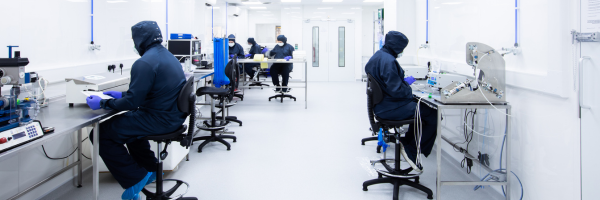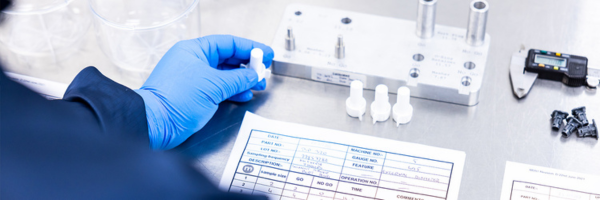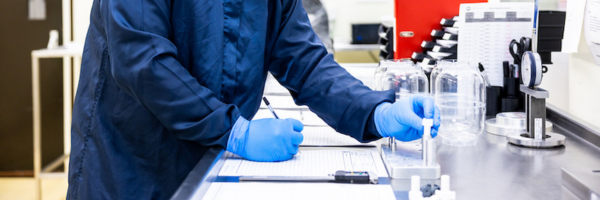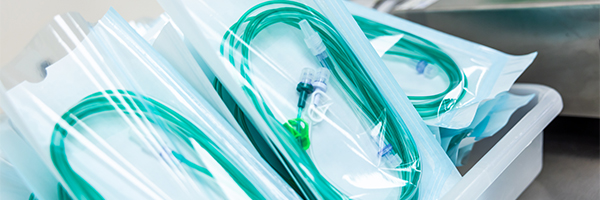
Most would probably consider 2022 to have been the first ‘normal’ business year post-pandemic. Others, including some here at Meridian Medical, would argue that there is no such thing as a normal year any more.
Simply being in business since the pandemic has had its highs and lows, and anyone that is part of the medical industry has also had to deal with its own curve balls.
As a subcontract medical device supplier, Meridian Medical has had the privilege of working with many types of medical device companies, among them manufacturers of critical care devices. Working with these customers means we get to see a fair bit of what influences the industry.
Here’s a look back on the factors that affected medical device manufacturing over the course of this year – they are mentioned in no particular order, just how they come to mind.
Device regulations and notified bodies
Device regulations, including the transition to Medical Device Regulations (MDR), and notified bodies have seemed to be a pain point for every company with medical devices on the market.
After Brexit, the European Medical Device Directive (MDD) split into UKCA, and European MDD, meaning that if you sold to both the UK and Europe, you now need two technical file audits. For most companies this created a fair amount of work.
On top of that, the European MDD then transitioned to MDR, which means that, on recertification or if you were launching a new device, you need to upgrade your files to meet MDR. For older legacy devices or devices with low annual sales, this was particularly challenging, and we saw several customers drop products due to the cost of upgrading the files being prohibitively high.
The transition to MDR caused several other problems in that, as the standard was new, companies didn’t know if they would pass, and if they didn’t, they couldn’t sell products. Changing your certification also requires changing your device labelling and planning your production with stock and label changes.
Of course all of these new certifications, audits and technical file updating cost money. In a year where costs were already spiralling out of control, businesses needed deep pockets to fund all the regulatory changes.
Production demand
2020 and 2021 were tough for medical device companies. As hospitals focused on Covid patients, all other routine surgeries were delayed. This significantly reduced global demand for routinely produced devices.
From Spring 2022 the industry jumped back to life, and we saw significant increases in demand across all of our medical device customers. Many of our customers have had record years and while this is normally great news, meeting that increased demand was very difficult for a number of reasons. Following Covid, lead times for raw materials were pushed out significantly, stocks were low and new orders had to be planned. This made getting more than your normal share of hard work.
On top of that, across the country, staff recruitment and retention were the hardest it had ever been and recruiting good staff needed real finesse. For every business we spoke with, staffing was one of the biggest challenges, but this seems to be easing. Many businesses in the UK had to be quite inventive to get new people on the shop floor and even more creative to keep them happy.
Tyvek supply issues
Tyvek polyethylene fibres are used across many industries. In the medical industry it is mostly used for white oversuits (used in crime scenes, cleanrooms etc), PPE and medical sterilisation pouches.
Due to the extreme weather and flooding in Texas, a significant number of chemical manufacturers were forced to stop production. This, in turn, led to a large number of material manufacturers being unable to get the raw chemicals required for production.
DuPont, which produces Tyvek, had a limited supply of raw materials, with an increase in global demand which led to customers being put on allocation. This led to many medical device packaging companies seeing increased costs and reduced supply for Tyvek packaging.
Coupled with increased demand for supply from the market, it caused serious supply issues.
We’re now somewhere over the hill, but lead times are still long, meaning that careful production planning is required.
Cost of power
Energy costs have affected everyone in the UK, both at work and at home. Many companies in the UK saw significant increases and, while residential energy is price regulated, commercial energy is not.
Many news sources reported on companies facing substantial energy cost increases that made their business unviable. For medical manufacturing, the cost of operating cleanrooms, air filtration and air conditioning, and machinery all increased significantly, and we saw many suppliers’ costs going up, along with the addition of an energy surcharge. The energy crisis, in conjunction with the other factors already mentioned, led to a challenging year for cost.
Silicone supplies
Silicone is used in a variety of medical devices, such as tubing, extrusions, check valves, LSR moulded parts and gaskets. China is the largest global supplier of silicone, followed by Russia.
There are many factors affecting raw silicone supply, but, in brief, China’s silicone production region had power supply issues, which led to a decline in production. This came in tandem with Chinese Covid lockdowns, which caused a decline in output. The second largest manufacturer of silicone, Russia, was no longer able to supply, due to the Ukraine/Russia war sanctions.
Thanks to global demand and reduced supply, market prices increased 25%, with limited supplies. The knock-on effect was quite significant for many industries, especially the medical industry.
The war in Ukraine
The effects of the war in Ukraine isn’t specific to medical manufacturing, but something so significant that it can’t be left out of this review.
Many companies that experienced supply issues during Brexit were quick to get sight of what issues would occur when the war in Ukraine started.
Clearly, there was a huge knock-on effect on the supply of power, with the sanctions imposed on Russia also causing numerous supply chain disruptions. Fortunately, in our area of industry, the effects on the supply chains were low. We did, however, have a number of Ukrainian refugees come to the local area and work with our company.
Looking back at 2022
Despite all the challenges, cost increases, material supply issues and regulatory hurdles, 2022 has been a great year for medical device manufacturing.
For Meridian Medical specifically, we have increased our production team by 30%, have added to our quality and technical teams to handle the increased outputs and taken on a new unit specially to work as a dispatch warehouse.
We have been working with our customers to ensure we can meet their demand and help reduce the impact of these previously mentioned challenges. We will be starting 2023 in great shape, with a fantastic team and look forward to working towards our 2023 goals whatever new challenges the year brings for us.
Meridian Medical is an established and experienced contract medical equipment manufacturer specialising in a wide range of medical device design, development and supply services.
To find out more about how Meridian Medical can help you with your medical product design and manufacture, get in touch today by filling out our online form or contacting us on 01903 732344 or info@meridian-medical.com.
Effective risk management of medical devices is a fundamental aspect of ensuring their safety, efficacy and regulatory compliance. Rooted in Hippocrates’ principle of ‘First, do no harm’, it serves as a proactive approach to identifying, evaluating and mitigating risks throughout the product lifecycle. By doing so, manufacturers can prevent potential harm to end users and patients, enhance device performance and uphold the highest standards of care. Effective risk management not only meets regulatory standards, such as ISO 14971:2019 and EU MDR, but also builds trust with stakeholders and protects businesses from costly recalls and legal issues. This blog* will explore the essential components of risk management, common misconceptions and the latest challenges facing the industry, with a focus on emerging technologies and their associated risks.
What is risk?
In the context of medical devices, the concept of risk is central to ensuring safety, efficacy and compliance. Understanding risk is critical for managing potential hazards throughout the lifecycle of a medical device.
ISO 14971 definition of risk
ISO 14971:2019, the international standard for the application of risk management to medical devices, defines risk as ‘the combination of the probability of occurrence of harm and the severity of that harm.’ This framework is tailored to the medical device industry, focusing on identifying, evaluating, controlling and monitoring risks to ensure patient safety and regulatory compliance.
ISO 31000 definition of risk
ISO 31000, the broader international standard for risk management across industries, offers a slightly different perspective, defining risk as the effect of uncertainty on objectives. However this definition emphasises the potential for both positive and negative outcomes and highlights the need for a systematic approach to managing uncertainty.
Key standards and regulations for the risk management of medical devices
Several key standards and regulations provide a framework for managing risks throughout the lifecycle of medical devices. These standards ensure that safety, performance and compliance are maintained in alignment with both global and regional regulatory requirements.
ISO 14971:2019- the core standard for medical device risk management:
- Provides a structured framework for identifying, evaluating and mitigating risks throughout the medical device product lifecycle.
- Emphasises balancing risks against benefits and implementing effective risk controls.
ISO 13485:2016 - integrates risk management into quality management systems:
- Ensures risk management is an ongoing process across all stages of development and production.
IEC 60601 - focuses on the safety and performance of electrical medical devices:
- Embeds risk management requirements into its guidelines.
Regional regulatory requirements:
- EU MDR - European Union Medical Device Regulation: Mandates robust risk management to meet General Safety and Performance Requirements (GSPR). It also highlights the importance of risk assessment in device design and post-market monitoring.
- FDA 21 CFR Part 820 - U.S. Food & Drug Administration: Enforces risk-based approaches within Quality Management System Regulation (QMSR). Requires risk management in design controls through to post-market surveillance.
Why is risk management for medical devices important?
Effective risk management plays a critical role in ensuring safety, compliance and business success. Here's why it matters:
- Patient Safety:
- Prevents harm from faulty or potentially harmful devices (e.g. non-medical grade materials or malfunctioning equipment).
- Ensures patient health is safeguarded throughout the device lifecycle.
- Regulatory Compliance:
- Helps meet standards like ISO 14971:2019 and EU MDR.
- Failure to comply can result in fines, recalls and delays to market access.
- Avoiding Financial Consequences:
- Inadequate risk management can lead to costly recalls, legal action or damage to reputation.
- Improved Device Performance:
- Identifies potential issues early, leading to better quality and reliability.
- Building Trust:
- Reinforces confidence with stakeholders and end users, ensuring long-term success in the healthcare market.
What is risk management for medical devices?
Risk management for medical devices is a systematic, ongoing process aimed at identifying, assessing, controlling and monitoring risks to ensure safety, compliance and efficacy. This process is essential for meeting regulatory requirements and safeguarding both patients and manufacturers.
An overview of the risk management process
Risk analysis
The Risk analysis document involves identifying potential hazards associated with the device’s design, manufacturing and usage. These hazards should include all aspects of a devices design and intended use, and address the type of failure such as mechanical failure, electrical hazards, biological incompatibilities or software errors. Each hazard should be thoroughly investigated to determine its origin, frequency and potential impact on patients and users. Tools such as Failure Mode and Effects Analysis (FMEA) or Fault Tree Analysis (FTA) are often used in this stage to ensure all potential risks are identified.
Risk evaluation
After identifying ach of the risks, the next step is to evaluate them by assessing and scoring the likelihood of each risk occurring and the potential severity of its consequences. This evaluation enables manufacturers to categorise risks based on their potential impact and decide which risks are acceptable and which require immediate attention. The regulatory standard ISO 14971:2019 provide guidance on setting thresholds for acceptable risk.
Risk control
Risk control is the stage where action is taken to reduce, eliminate or mitigate identified risks. This might involve modifying the device design, adding safety features, enhancing testing protocols or implementing preventive measures in manufacturing. Medical device verification and validation are therefore key to the development and manufacturing of medical devices.
Verification ensures that any risk controls function as intended, while validation confirms they effectively reduce risks in real-world use. The aim is to lower residual risks to a level that is acceptable and ensures patient safety without compromising the device's intended function. Controls are continually reviewed and updated based on new information or evolving standards.
Residual risk evaluation
After implementing risk controls, manufacturers assess the remaining risks, known as ‘residual risks’, to ensure they are within acceptable limits. This step is critical to confirm that, even after mitigation measures, the risks do not pose an unacceptable threat to patient safety or device performance. If residual risks are deemed too high, further corrective actions, such as enhancing safety features or modifying design, are taken. Residual risk evaluation ensures that a device remains safe, compliant and effective throughout its lifecycle, balancing practical risk reduction with regulatory standards.
Production and post-production information
Risk management extends beyond product development into production and post-production. During production, it’s crucial to monitor the device for any new risks that arise during scaling or manufacturing processes. Supplier auditing is a key part of this process, helping to ensure that external vendors continue to meet quality and regulatory standards, reducing the risk of defects or inconsistencies. Once the device is on the market, Post market surveillance is necessary to collect data, including user feedback, adverse events as well as any complaints. This information helps identify new risks or previously unrecognised hazards, prompting updates to risk control measures and further refinement of the product.
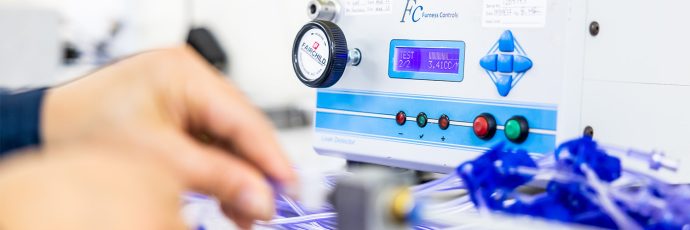
Common misconceptions in risk management
Risk management in medical devices is often misunderstood, leading to gaps in implementation and compliance. Below are some of the most common misconceptions:
Risk management is only a regulatory requirement
Many believe that risk management is only necessary to meet regulatory requirements. While it is a critical part of compliance with standards such as ISO 14971:2019 and EU MDR, risk management goes beyond merely ticking boxes. It is an essential process to ensure patient safety, improve device performance and maintain long-term trust in the device. Effective risk management helps identify potential issues early, reducing the likelihood of costly recalls, legal action or damage to the company’s reputation.
Risk management is only about preventing harm
Another misconception is that risk management is solely about preventing harm or injury. While preventing harm is an essential aspect, risk management also includes evaluating the benefits of a device, balancing risks with intended benefits, and mitigating any risks that remain. It is a holistic process that involves identifying, assessing and controlling risks throughout the device's lifecycle, ensuring that both the device’s safety and effectiveness are optimised.
Risk management ends after product development
Some might think that risk management only applies during the design and development phases. However, this is far from the case. Risk management is an ongoing process that continues after product development, throughout production and even post-market. Continuous monitoring of device performance, addressing adverse events and implementing corrective actions are essential to maintaining safety and compliance. A robust post-market surveillance system ensures that any new risks are identified and mitigated quickly.
Emerging Challenges in Risk Management
As medical technology advances, new risks are emerging, requiring manufacturers to adapt their risk management strategies:
Cybersecurity Risks in Connected Devices
The rise of connected medical devices has introduced potential cybersecurity threats that challenge successful risk management of medical devices. These devices often store or transmit sensitive patient data, making them attractive targets for cyberattacks. A breach in security could lead to data theft, manipulation or even device malfunctions that harm patients. Risk management for connected devices must include robust cybersecurity measures to protect patient information, ensure device functionality and comply with regulations like the FDA’s post-market guidance on cybersecurity.
Risks Posed by AI and ML Systems
Artificial Intelligence (AI) and Machine Learning (ML) systems are becoming more prevalent in medical devices, from diagnostic tools to predictive healthcare applications. However, these technologies introduce unique risks due to their complex, data-driven decision-making processes. The ‘black box’ nature of many AI/ML models can make it difficult to understand how decisions are made, raising concerns about accountability and transparency. Risk management for AI/ML-based devices must address the potential for bias in algorithms, the need for continuous validation of models, and the implications of incorrect diagnoses or treatments.
Regulatory and Ethical Considerations
The rapid pace of innovation in connected devices and AI/ML systems also poses regulatory challenges. Standards and regulations must evolve to keep up with these technologies while ensuring patient safety and data privacy. Manufacturers must be proactive in staying abreast of new guidelines and regulations to manage emerging risks effectively.
These emerging challenges highlight the need for dynamic risk management approaches that can address the evolving landscape of connected and AI-driven medical devices.
Risk management of medical devices isn’t just a box to tick
Risk management is the backbone of every successful medical device. By constantly identifying, evaluating and mitigating risks, manufacturers not only protect patients but also ensure long-term business success. As technology advances, staying ahead of emerging risks like cybersecurity threats and AI challenges will be key to maintaining trust, compliance and innovation. A strong, evolving risk management strategy is your pathway to navigating the future of medical devices with confidence.
FAQs Risk Management of Medical Devices
What is risk management for medical devices?
Risk management for medical devices involves identifying, assessing and mitigating risks throughout a device's lifecycle. This process ensures patient safety, product effectiveness and regulatory compliance. It aims to reduce the likelihood of device failures or harm by implementing effective risk controls and continuously monitoring post-market performance.
What are the risks of medical devices?
Risks of medical devices include mechanical failure, electrical hazards, biocompatibility issues, user error, software malfunctions and data breaches. These risks can lead to patient harm, device malfunction or non-compliance with regulations. Effective risk management helps identify, assess and mitigate these risks to ensure safety and performance.
What is the ISO risk management standard for medical devices?
The ISO risk management standard for medical devices is ISO 14971:2019. It provides a framework for identifying, evaluating and controlling risks associated with medical devices throughout their lifecycle. The standard ensures that all potential hazards are identified, risks are assessed and appropriate risk control measures are implemented to ensure patient safety and device reliability.
What are the 5 steps of risk management?
The five steps of risk management are:
- Risk Analysis – Identifying potential hazards and risks.
- Risk Evaluation – Assessing the likelihood and severity of each risk.
- Risk Control – Implementing measures to reduce or eliminate risks.
- Residual Risk Evaluation – Evaluating remaining risks after controls are applied.
- Post-Market Surveillance – Monitoring the device in real-world use and updating the risk management plan.
*DISCLAIMER: This blog has been written to provide general guidance on Risk Management of Medical Devices. Meridian Medical is not an expert in this field and does not offer risk management services. For expert advice or assistance, please consult a qualified professional. Meridian Medical is not responsible for actions taken based on this content.
Partner with Meridian Medical
If your company is looking for a trusted partner to manufacture high-quality medical devices, Meridian Medical is ready to assist. With a proven track record and a commitment to excellence, Meridian Medical is your ideal contract manufacturing partner.
Contact us today to learn more about our services and how we can help bring your innovative medical devices to market. Get in touch by filling out our online form or contacting us on 01903 732344 or info@meridian-medical.com.

Author James Fenton
James Fenton, Managing Director of Meridian Medical since 2017, has over 20 years of industry experience. He has been pivotal in developing and producing over 500 types of single-use medical devices, including CE-marked class 2 and 3 devices. With a strong focus on business strategy, project management and customer support, James ensures Meridian Medical's agility and innovation. His expertise is backed by qualifications in Business Studies and Medical Process and Equipment Validation, plus extensive industry training. James's insights into the industry that he has dedicated his entire career to provide a bank of invaluable information aimed at increasing knowledge of and driving advancements in medical device manufacturing.

